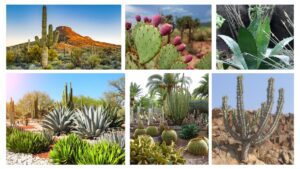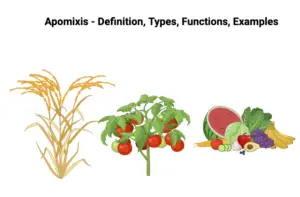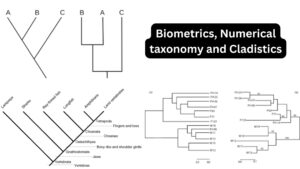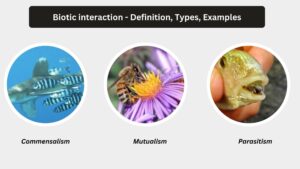What is Endemism?
- Endemism refers to the state where a species is exclusively found within a specific geographic area, such as an island, country, or a distinct ecological zone. For example, the Cape sugarbird, native solely to southwestern South Africa, exemplifies endemism, as it is found only in this specific region. Organisms classified as endemic do not occur naturally elsewhere. Conversely, species that exist in multiple locations are not considered endemic to any of those places.
- In the field of conservation biology, endemism plays a crucial role in assessing biodiversity and determining the risk of extinction for species confined to limited areas. This concept is also significant in evolutionary biology, as it helps scientists understand how environmental changes influence species’ distribution, including shifts in their geographic range, potential extinctions, or diversification into new species.
- The concept of endemism contrasts with that of cosmopolitan distribution, where species have a widespread or global range. While endemism describes species restricted to specific locales, cosmopolitan species are found across a broad spectrum of environments.
- Another term related to endemism is “precinctive,” which specifically denotes species confined to defined geographical regions. Though “autochthonal,” “autochthonic,” and “indigenous” are sometimes used in similar contexts, they do not precisely capture the exclusive geographic limitation implied by endemism.
- Endemism can also apply to other areas such as diseases or natural phenomena, referring to the typical or standard presence of a particular condition within a specific region. It is important to distinguish endemism from indigenous status. While indigenous species refer to the origin of a species, a species can be both endemic and indigenous to a region. Once a species extends beyond its original habitat to achieve a global distribution, it is considered cosmopolitan, as exemplified by whales, which evolved from land-dwelling ancestors to become widely distributed across the world’s oceans.
Endemism Definition
Endemism is the condition where a species is native to and restricted to a specific geographic area, such as an island or country, and is not found naturally elsewhere.
What is an Endemic Species?
- An endemic species is defined as a species that is unique to a specific geographic location and is not found naturally elsewhere. This geographic restriction often means that the species’ entire population exists only within this defined area. For instance, the kangaroos of Australia and the Asiatic lion of India are examples of endemic species, as they are found exclusively in these regions.
- Endemic species can be categorized into two main types based on their origin. Paleoendemism occurs when a species becomes restricted to a smaller area after previously existing over a broader region. This can happen due to environmental changes or competition. Neoendemism, on the other hand, refers to newly evolved species that are confined to the area where they first appeared. These species are often adapted to specific ecological niches within their restricted habitats.
- The presence of endemic species can be an indicator of the health of an ecosystem. These species are highly specialized to their environments and can be particularly vulnerable to changes. Because their survival is closely linked to specific ecological conditions, even minor alterations in their habitat can pose significant threats. Therefore, the conservation of their habitats is crucial for their continued existence.
- While endemism itself does not necessarily mean that a species is endangered, it often correlates with higher vulnerability. Species restricted to small or isolated regions face increased risks from habitat destruction, climate change, and human activities. As such, endemic species are often used as indicators for assessing the overall health of their ecosystems.
- In contrast, some globally distributed species also face significant threats. For example, sharks are found in various oceanic regions but are threatened by activities like finning. Despite their wide distribution, their populations are rapidly declining. This illustrates that endemism is just one factor influencing a species’ conservation status.
- Protection measures for endemic species can be more straightforward due to their confined ranges. Conservation efforts can focus on preserving the limited habitat areas where these species live, thus reducing the impact of human activities. Establishing protected areas or conservation easements can help safeguard these critical habitats and the endemic species they support.
Types of Endemism
Endemism can be categorized into several distinct types, each reflecting different evolutionary and ecological processes. Understanding these types is essential for grasping how species distributions are shaped by various factors.
- Neo-endemism
- Definition: Neo-endemism refers to species that are evolutionarily recent and have not yet dispersed widely. These species are confined to specific, often newly formed or isolated areas.
- Example: Senecia combrensis is an example of a neo-endemic species, as it is relatively new and restricted to a particular region.
- Palaeo-endemism
- Definition: Palaeo-endemism describes species that were once widely distributed but are now restricted to smaller, isolated regions due to historical changes in climate, geography, or other environmental factors.
- Factors Affecting Palaeo-endemism: Physical barriers like deserts or mountains, changes in climate, or alterations in soil types can lead to the restriction of species.
- Example: Many species in the Western Ghats of India are considered palaeo-endemics, as their range has contracted over time.
- Epibiotics (Relic Endemics)
- Definition: Epibiotics, also known as relic endemics, are species that belong to ancient or fossil groups and are now restricted to a few locations due to favorable climatic conditions or lack of competition.
- Examples: Ginkgo biloba, which is limited to China but was once widespread, and Sequoiadendron giganteum, found only in the Sierra Nevada of California, illustrate this type of endemism.
- Holoendemics
- Definition: Holoendemics are species that are not of recent origin but have retained a restricted geographic distribution. They represent a form of endemism intermediate between neo-endemics and palaeo-endemics.
- Characteristic: These species have maintained a narrow distribution due to their long-term presence in a specific area.
- Active Epibiotics
- Definition: Active epibiotics are species that have reactivated from a palaeo-endemic state due to local conditions, leading to the evolution of new endemic species after a period of isolation.
- Characteristics: These species show a resurgence in their endemic status due to changes in the local environment that favor their survival and diversification.
- Local Endemics
- Definition: Local endemics are species restricted to very small, specific areas. Their limited distribution often makes them particularly vulnerable.
- Example: Certain plant species that are confined to a single island or mountain range can be categorized as local endemics.
- Pseudo-endemics
- Definition: Pseudo-endemics are species that arose due to mutations and were once found in limited areas. While the original wild populations may have vanished, descendants of these species can still be found in cultivated settings.
- Example: Franklinia alatamaha was once found in the wild in Georgia but is now only present in gardens.
- Schizoendemics
- Definition: Schizoendemics are derived from or have given rise to more widespread taxa with the same chromosome number.
- Characteristics: They represent a form of neo-endemism where the species has a more restricted distribution compared to its progenitor.
- Patroendemics
- Definition: Patroendemics are restricted diploids that have given rise to widespread polyploids.
- Characteristics: This type of neo-endemism involves species that have a narrow distribution but produce polyploid forms that are more widespread.
- Apoendemics
- Definition: Apoendemics are restricted polyploids that originated from more widespread diploids.
- Characteristics: These species are confined to specific areas but have arisen from more common diploid ancestors.
Characters of Endemics
Endemic species exhibit several distinct characteristics that define their restricted distribution and ecological roles. Understanding these traits provides insights into their evolutionary and environmental contexts.
- Localized Distribution
- Endemic species are confined to specific geographic areas due to their narrow ecological amplitude. This limited range results in an inability to establish populations in new or different environments. Such species thrive only within their specialized habitat.
- Limited Migration Potential
- These species generally lack the potential to migrate extensively because their genomes are often saturated with adaptations specific to their local conditions. This saturation reduces their ability to adapt to new environments, making migration challenging.
- Migration and Endemism
- True endemics typically do not migrate beyond their defined regions. In contrast, neoendemics, which are relatively new in evolutionary terms, may possess some potential for migration. However, their actual movement is often restricted by ecological barriers.
- Dispersal Limitations
- The dispersal propagules of endemic species, such as seeds or spores, often fail to survive or establish new populations in different areas. This failure can be attributed to physical barriers, such as mountains or oceans, that impede successful migration and colonization.
Theories of Endemism
The study of endemism encompasses several theories that seek to explain why certain species are confined to specific geographic regions. Two primary theories address these phenomena: the Relict Theory and the Age and Area Hypothesis.
- Relict Theory
- Concept: This theory posits that endemic species are relicts or remnants of a once broader distribution. According to this view, these species represent the last surviving members of formerly widespread flora that have since declined due to environmental changes.
- Supporting Examples: Geographers often cite species like Sequoia sempervirens and Sequoiadendron giganteum. These trees, endemic to their respective regions in California and Oregon and the Sierra Nevada, were once more widely distributed during the Cretaceous and Tertiary periods.
- Age and Area Hypothesis
- Concept: This theory suggests that the extent of a species’ distribution correlates with its evolutionary age. According to this hypothesis, a smaller distribution area indicates a younger evolutionary stage. Therefore, species with limited ranges are considered to be more recent in their evolutionary history and may be in the process of gradual extinction.
- Supporting Examples: The genus Primula and species such as Impatiens and Rhododendron are often referenced in this context. An illustrative case is Coleus elongatus, which is endemic to the summit of the Ritigala mountains in Sri Lanka. In contrast, Coleus barbatus is widely distributed across tropical Asia and Africa. Willis suggested that C. elongatus is a derivative of the more widely distributed C. barbatus.
Factors Responsible for Endemism
Several factors contribute to the emergence and maintenance of endemic species, which are organisms confined to specific geographic locations. Understanding these factors requires a detailed examination of the underlying processes and conditions that promote endemism.
- Geographical Barriers
- Concept: Geographical barriers such as mountain ranges, oceans, deserts, and glacial belts restrict the movement of seeds, fruits, spores, and reproductive bodies. These barriers prevent plant species from migrating beyond their original areas.
- Implication: As a result, species isolated by these barriers often become endemic to their original locations. For example, the Himalayas and various islands like Hawaii and New Zealand host a high percentage of endemic species due to their isolation.
- Concentration of Taxa
- Concept: This factor involves the reduction in the area of distribution of a species to its place of origin, known as concentration of taxa. This process is often a result of unfavorable climatic or biotic conditions.
- Implication: As species migrate, they may fail to establish in new areas, leading to their confinement to their original habitats and contributing to their endemic status.
- Suitability of Microclimate
- Concept: Endemic plants often thrive in specific microclimates that provide ideal edaphic (soil), climatic, and biotic conditions for their growth and survival.
- Implication: The microclimate of adjacent areas may not be suitable for the survival of these species, which restricts their distribution and reinforces their status as endemics. For instance, plants may only survive in the particular conditions found in isolated mountain ranges or islands.
- Selection by Soil Factors
- Concept: New species often evolve in regions where soil conditions are particularly favorable. These species may be adapted to these specific soil conditions and struggle to establish themselves in other areas.
- Implication: The adaptation to unique soil factors contributes to the species’ endemism by limiting their distribution to the areas where these optimal soil conditions exist.
- Natural Variation in Isolated Plants
- Concept: On isolated landmasses such as islands, new plant species can evolve due to natural variations and genetic mutations. The surrounding sea acts as a barrier, preventing these new species from migrating to continental areas.
- Implication: This isolation leads to the evolution of species that become endemic to these islands due to their inability to spread beyond their isolated habitats.
Measurement of Endemism
Measuring endemism involves several factors that influence how results are interpreted. These factors include the units of measurement, the mode of reporting data, and various biases. Understanding these aspects is crucial for accurately assessing the endemism of species within a given region.
A. Units of Measurement
- Extent of Occurrence vs. Area of Occupancy:
- Extent of Occurrence: Refers to the total distance between the outermost limits where a species is found. This measure is commonly used in biogeographic studies to assess the overall distribution of a species.
- Area of Occupancy: Indicates the specific area within the extent of occurrence where the species is actively found. This metric is particularly useful in ecological studies and conservation planning to understand the species’ actual habitat and its environmental tolerances.
- Range Size Categories:
- Local Endemics: Species with a restricted range size, defined by various thresholds such as 50,000 km² for Neotropical birds or 2,000 km² for plants in specific regions.
- Point Endemics: Species with extremely limited ranges, often less than 5 km². These species are highly vulnerable to habitat changes due to their minuscule distribution.
- Continuous Variable Approach:
- An emerging method involves calculating endemism as the sum of inverse range sizes for all taxa in a given quadrat or map unit. This approach provides a more nuanced view of endemism by accounting for variations in range sizes within a specific area.
B. Percentage vs. Counts
- Percentage of Endemics:
- This metric expresses the proportion of endemic species relative to all species present in a region. High percentages of endemics in species-poor areas, such as oceanic islands, may indicate significant ecological uniqueness.
- Absolute Counts of Endemics:
- This method counts the actual number of endemic species within an area. Regions with high species richness and endemism, like Madagascar or the Cape Floristic Region, often exhibit both high counts and high percentages of endemic taxa.
- Comparison of Measures:
- Ideally, both percentages and counts should be used to provide a comprehensive understanding of endemism. However, this dual approach is not always applied, leading to incomplete assessments of patterns and significance.
C. Biases
- Taxonomic Interpretation:
- Variations in taxonomic classification and limited geographical exploration can introduce biases in identifying and reporting endemics. Misclassification can result in pseudoendemics, which are widespread species incorrectly thought to be endemic, or nonapparent endemics, which are truly endemic species misclassified as widespread.
- Sampling Error:
- Species with smaller ranges often receive less attention and research compared to more widespread species, leading to potential biases in understanding their conservation status and ecological roles.
- Human Perceptions:
- Human perceptions and historical biases can also affect the classification and significance of endemics. Thorough research and accurate taxonomic application are essential for minimizing these biases and ensuring reliable measurements of endemism.
Examples of Endemic Species in India
India is home to a diverse range of endemic species, particularly within the Himalayan region and the Western Ghats. These species, comprising both flora and fauna, have evolved unique adaptations to their specific environments.
Flora
- Indian Pitcher Plant (Nepenthes khasiana)
- Location: Khasi Hills of Meghalaya
- Characteristics: This tropical plant is endangered and native only to India. It features modified leaves that form a pitcher-shaped trap for capturing and digesting insects.
- Gai Chiria (Uvaria lurida)
- Location: Berbera Forest of Odisha
- Characteristics: A woody, bisexual flowering plant known for its unique reproductive structure and habitat specificity.
- Hermit’s Spittoon (Sapria himalayana)
- Location: Arunachal Pradesh, Assam, Manipur, and Meghalaya
- Characteristics: A parasitic plant that derives nutrients and water from host plants. It is related to the Rafflesia and is noted for its striking, fleshy flowers.
- Nilgiri Champa (Magnolia nilagirica)
- Location: Western Ghats
- Characteristics: A large tree with brown bark, known for its high-quality wood and beautiful flowering.
- Blackboard Tree (Alstonia scholaris)
- Location: Indian Subcontinent, especially West Bengal
- Characteristics: An evergreen tree used in traditional medicine. It has toxic properties and thrives in tropical climates.
- Dalchini (Cinnamomum sulphuratum)
- Location: Kerala and Karnataka
- Characteristics: The bark of this tree is used for spice and medicinal purposes. It is a notable example of an aromatic plant.
- Andhra Pradesh Cycas (Cycas beddomei)
- Location: Andhra Pradesh
- Characteristics: This gymnosperm produces cones and is part of the ancient Cycadophyta group, reflecting a long evolutionary history.
Fauna
- Asiatic Lion (Panthera leo persica)
- Location: Gir National Park, Gujarat
- Characteristics: Known as the Persian lion, it is critically endangered and listed in the IUCN Red List.
- Lion-Tailed Macaque (Macaca silenus)
- Location: Western Ghats of Southern India
- Characteristics: An old world monkey with distinct black fur and a silver mane. It is known for its specialized habitat requirements.
- Namdapha Flying Squirrel (Biswamoyopterus biswasi)
- Location: Arunachal Pradesh
- Characteristics: A nocturnal, critically endangered species noted for its gliding capabilities and specific habitat.
- Pygmy Hog (Porcula salvania)
- Location: Assam
- Characteristics: The smallest pig species in the world, it is rare and listed as endangered due to habitat loss.
- Kashmir Stag (Cervus elaphus hanglu)
- Location: Kashmir
- Characteristics: Also known as the Hangul, this sub-species of red deer is critically endangered and adapted to the high-altitude forests.
- Sangai Deer (Rucervus eldii eldii)
- Location: Manipur
- Characteristics: Known as Eld’s deer, it inhabits marshy floating grasslands and is distinguished by its unique ecological niche.
- Nilgiri Tahr (Nilgiritragus hylocrius)
- Location: Nilgiri Hills
- Characteristics: The state animal of Tamil Nadu, this mountain sheep is adapted to the rugged terrain of the Nilgiri Hills.
Examples of Endemic Species in World
Endemic species are those that are restricted to specific geographical areas and often exhibit unique adaptations to their environments. Many of these species are also critically endangered. Below are notable examples of such species from various regions around the globe.
Flora
- Dragon Tree (Dracaena draco)
- Location: Canary Islands, Spain
- Characteristics: This subtropical evergreen tree is recognized for its distinctive appearance and its production of small, white flowers. The tree’s resin, known as “dragon’s blood,” has been historically used in various applications.
- Sow Thistles (Sonchus neriifolius)
- Location: Robinson Crusoe Island, Chile
- Characteristics: This flowering plant is critically endangered and exceedingly rare. Its survival is threatened by habitat loss and other environmental pressures.
- Green Pitcher Plant (Sarracenia oreophila)
- Location: North America
- Characteristics: A carnivorous plant, it has specialized pitcher-shaped leaves that trap and digest insects. This adaptation allows it to thrive in nutrient-poor soil conditions.
Fauna
- Giant Panda (Ailuropoda melanoleuca)
- Location: China
- Characteristics: Known for its distinctive black and white coat, the giant panda is a member of the bear family. It is primarily herbivorous, with a diet that consists almost entirely of bamboo.
- Bornean Orangutan (Pongo pygmaeus)
- Location: Borneo Island, Southeast Asia
- Characteristics: This great ape is one of three species of orangutans and is noted for its high intelligence and arboreal lifestyle. Conservation efforts are critical due to habitat destruction and poaching.
- Komodo Dragon (Varanus komodoensis)
- Location: Komodo Island, Indonesia
- Characteristics: As the largest extant lizard, the Komodo dragon is known for its formidable size and predatory behavior. It is a powerful carnivore with a diet that includes large prey such as deer and water buffalo.
- Red Kangaroo (Osphranter rufus)
- Location: Australia
- Characteristics: The red kangaroo is the largest of all kangaroo species and marsupials in Australia. It is well-adapted to the arid interior of the continent, with powerful hind legs for hopping long distances.
- Tasmanian Devil (Sarcophilus harrisii)
- Location: Tasmania, Australia
- Characteristics: The Tasmanian devil is the largest surviving carnivorous marsupial. It is known for its ferocious feeding behavior and distinctive vocalizations.
References
- https://northgauhaticollegeonline.co.in/attendence/classnotes/files/1716889844.pdf
- https://www.biologydiscussion.com/angiosperm/taxonomy-angiosperm/endemics-types-characters-and-theories/34819
- https://krishnathcollege.ac.in/studyMaterial/15824Unit-10_ENDEMISM_Plant%20Ecology%20and%20Phytogeography_CC-T-09_UG%204th%20SEM_%20By%20Dr.%20Sandip%20More.pdf
- https://ignoupur.com/endemism/
- https://biologydictionary.net/endemism/
- https://www.geeksforgeeks.org/endemic-species/
- https://www.biologyonline.com/dictionary/endemic
- https://enviro2.doe.gov.my/ekmc/wp-content/uploads/2016/08/1385472230-3-s2.0-B0122268652001036-main.pdf



